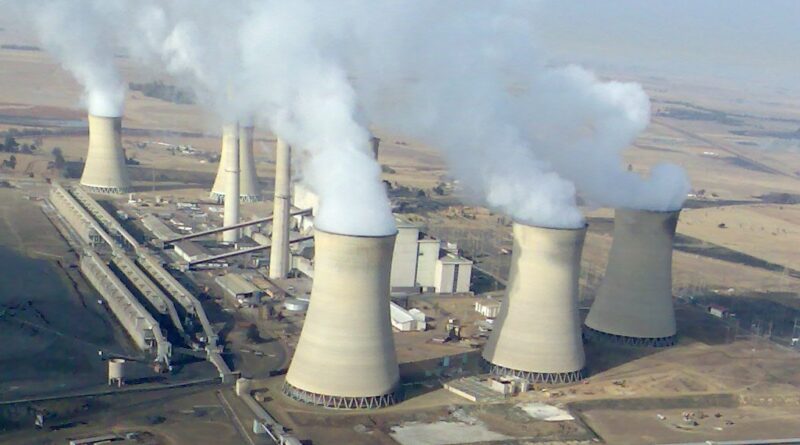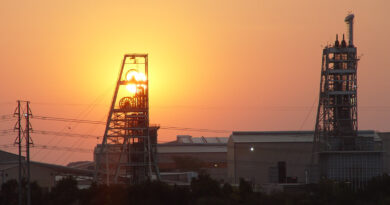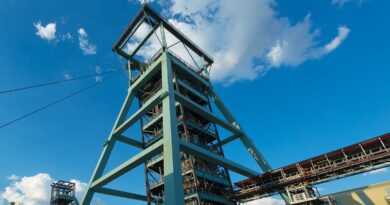It’s time to end Eskom’s monopoly
In 2022 alone, we have had a combined 673 hours of loadshedding (at time of writing); that is 28 days without power. Lights off, computers down, heaters cold during the cold of winter. And that is just so far. Eskom CEO Andre de Ruyter claimed earlier this year that South Africans could face up to 104 days of power outages.
By the track record of South Africa’s public sector, that could prove to be a conservative estimate. Already, there is fear that loadshedding will get far worse by September.
How did this happen? The common idea is that loadshedding is a post-1994 problem, the product of mismanagement and corruption by the African National Congress (ANC) and its habit of cadre deployment and racial quotas.
It is true that a lot of blame can be laid at the feet of the ANC, its corruption, and its policies. Eskom is unable to correct its bad behaviour because it does exist under the thumb of a government which will use it as a political tool – not an important utility.
But the ANC is not solely to blame. While Eskom is collapsing today, the rot began long ago. And while it may have seemed that Eskom functioned pre-1994, this was all temporary. For the reason it fails today has existed as long as it has.
The cause is, of course, its monopoly status. And as long as it exists as a monopoly, South Africa will continue to suffer.
History of Eskom/Escom
The Electricity Supply Commission (Escom, back then) was founded in 1923 as a simple regulator and subsidiary supplier. But its powers were anything but simple. This government entity had the regulatory power to control everything electrical.
Using its regulatory powers, and the stifling nature of the Electricity Act, Escom pressured private power producers out of the market. This was accomplished most notably by banning private power producers from charging for a profit.
By 1948, Escom became a full monopoly when the National Party nationalised the entire electricity industry. But by this time, it was basically a ceremonial event; Escom’s control over the industry made it a monopoly in reality.
Escom was given one primary objective: the production of cheap and plentiful electricity. To accomplish this, they banned the industry and themselves from charging for a profit. Pricing was not allowed to float freely, and was rather set manually to cover costs, loan repayments and a small amount for reserves. In practice, Escom set the price even lower than its costs – to artificially achieve their goal of providing ‘cheap’ electricity.
The political goals behind Escom’s obsession with cheap electricity was driven by the mining industry. Mining companies needed cheap electricity to function and lobbied for the Victoria Falls Power Company to be nationalised, so they could control the price of electricity for their own ends.
Private power producers were forced out of the market when the Electricity Act of 1922 banned them from making a profit – eliminating not only an incentive to do their job, but also a vital signifier of a healthy industry.
For a while, the Escom monopoly functioned. Dirt cheap coal and artificially cheap labour backed by the Apartheid migrant forced labour system supported this. Loans were plentiful and backed by the state.
It continued to lower its prices, relying on loans to keep itself afloat, as it wasn’t even allowed to receive direct public funding.
Despite claims that Escom functioned historically well, it ran into many troubles in the 1950s to meet demand. To remedy the situation, it took out large loans to construct new power plants. By 1975, it was achieving the demand, but also producing a wasteful surplus of electricity.
As the Soweto Uprising in 1976 and the strangling nature of the Apartheid system became apparent, the economy started to contract. Escom was left with a huge amount of wasteful power stations, which they mothballed. The Oil Crisis of 1973 forced Escom to raise prices (but not by enough), much to their chagrin, and by 1981, South Africa was facing loadshedding. Something that many pundits believe to be a post-1994 phenomenon.
With a shrunken economy, Escom began losing revenue. But instead of raising prices to make up the shortfall, it began firing engineers and mothballing power stations.
By 1984, the rot in Escom had gotten so bad that a commission of inquiry called the De Villier’s Commission began investigating Escom. But this commission was bogged down by political rivalries and ideologies.
What the commission eventually recommended that Escom do is basically conserve electricity without raising prices, while also charging for a profit. A very contradictory recommendation!
Escom never really raised their prices to match their needs. Rather, they continued to decrease the price of electricity despite not building any new power stations, well into the 90s. By 1996, they bragged about achieving the cheapest electricity in the world, while providing electricity to previously disenfranchised areas. An impressive feat, but ultimately unsustainable.
The newly renamed Eskom was almost privatised in the late 90s in line with GEAR policies to manage national debt and remove market distortions. This would have been a great move to put our electricity industry on the path to facing market realities and becoming more sustainable. But this move faced protests from trade unions and the SA Communist Party. Eventually, however, the privatisation failed as the government gave four years for private competition to volunteer to compete with Eskom, but none of them could produce electricity at Eskom’s impossibly low price.
After that, we catch up to the history of Eskom that most people know. Corruption, collapse, loadshedding, coal tender fraud. And a lot of theft.
What happened?
Eskom/Escom was unable to function properly as a company because it was shielded from reality. As a sole monopoly, it had no competition to learn from, to compete against, and to incentivise it to do a good job. There is no point working hard if you get paid regardless of whether you do or don’t.
The major fatal flaw of Eskom, however, was in its price system. Throughout its existence, it didn’t charge for a profit. It set a price based on what it thought South Africans could afford – never testing what electricity should cost through a market-based approach. This is why competition is so important. It allows businesses to sell a product for a rate that it would like to be paid, yet be held accountable by other businesses who could undercut them.
Today, Eskom can just keep raising the electricity price to catch up with its old low prices. And we have no power to choose a cheaper alternative.
With artificially low prices, Eskom got into huge amounts of debt, fired needed experts, shutdown its own power plants, and also generated an unsustainable demand whereby South Africans got used to a price of electricity that couldn’t last. In hindsight, it would have been better for our economy to grow slower with realistically priced electricity than to shrink dramatically now that Eskom can’t keep up with the demand.
If there was competition, consumers could also be shielded from Eskom’s mistakes. Competitors aren’t just there to forge good business practices, but to provide an alternative in case of failure. They exist for damage control. And without them, Eskom has no incentive and no fall-back.
Conclusion
Eskom must not only be privatised. It must be bundled up, sold to legitimate companies, and the legislation that led to this rotten mess must be ripped up. Electricity is too vital a resource to be put in the hands of a monopoly which has no true incentive to perform its job or not.
With alternative power suppliers, we will have a fallback in case of loadshedding, and more than that will finally be able to see what the real price and supply of electricity looks like in South Africa when politicians with delusions of grandeur don’t distort reality.




